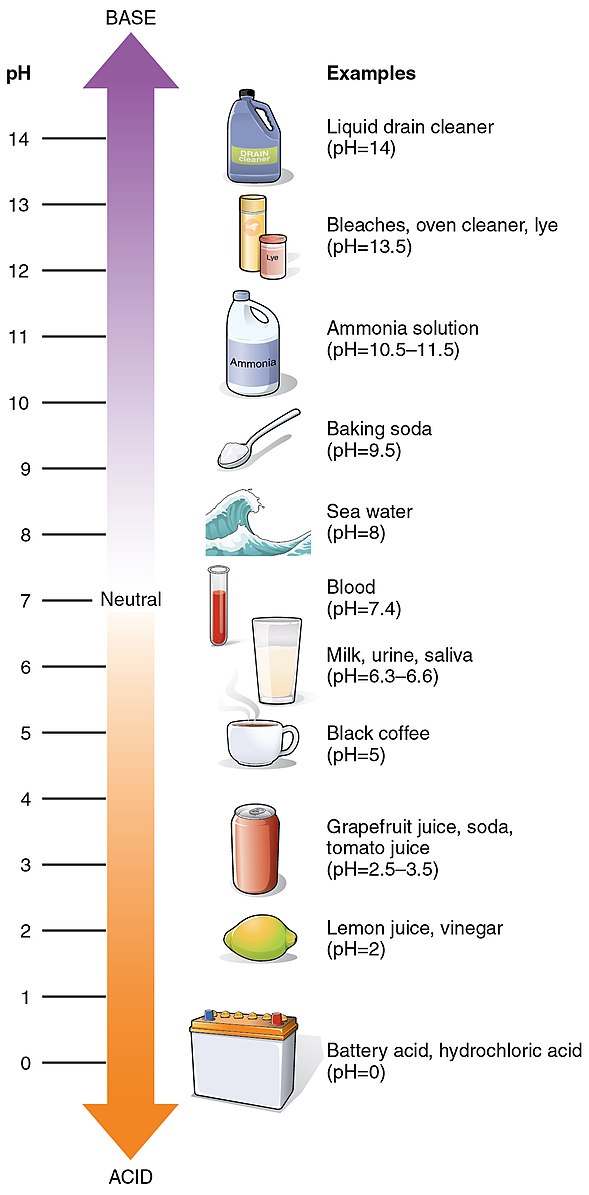Potassium cyanide (KCN) is a highly soluble compound in water, which readily dissociates into potassium (K+) ions and cyanide (CN-) ions. The pH of a KCN solution will increase due to the generation of hydroxide ions (OH-) from the reaction of cyanide ions with water. This article will explore the pH of potassium cyanide in water, including the factors that affect it, the importance of proper storage and handling, and the safety considerations involved.
Understanding the pH of KCN in Water
When potassium cyanide is dissolved in water, the cyanide ions (CN-) react with water to form a basic solution. This reaction is represented as follows:
CN-(aq) + H2O(l) ⇌ HCN(aq) + OH-(aq)
The pH of a KCN solution will depend on the concentration of hydroxide ions present, which will increase as the concentration of cyanide ions increases. The pH of a KCN solution can range from around 9.3 to 11, depending on the concentration of the solution.
At a pH of 9.3 to 9.5, the cyanide ions (CN-) and hydrogen cyanide (HCN) are in equilibrium, with equal amounts of each present. At a pH of 11, over 99% of the cyanide remains in the form of CN-.
Factors Affecting the pH of KCN in Water
 Image source: OpenStax College
Image source: OpenStax College
The pH of a KCN solution can be influenced by several factors, including:
-
Concentration of Cyanide Ions: The higher the concentration of cyanide ions in the solution, the higher the pH will be due to the increased generation of hydroxide ions.
-
Presence of Contaminants: Impurities or substances present in the KCN solution, such as heavy metals or degradation products, can affect the pH and stability of the solution.
-
Exposure to Light and Heat: Exposure to light or heat can cause the KCN solution to degrade, leading to the formation of hydrogen cyanide (HCN) gas, which can affect the pH.
Proper Storage and Handling of KCN Solutions
To ensure the stability and safety of a KCN solution, it is essential to follow proper storage and handling procedures:
-
Storage Conditions: KCN solutions should be stored in a cool, dark place to prevent degradation and the formation of HCN gas.
-
pH Adjustment: The pH of the KCN solution should be adjusted to 12 or greater using a strong base such as sodium hydroxide (NaOH) or potassium hydroxide (KOH). This helps to prevent the formation of HCN gas.
-
Water Quality: When preparing a KCN solution, it is important to use distilled or deionized water to avoid contamination from minerals or other impurities.
-
Safety Precautions: Appropriate safety precautions should be taken when handling KCN solutions, including the use of personal protective equipment (PPE) such as gloves, goggles, and a lab coat.
Safety Considerations
Potassium cyanide is a highly toxic substance, and exposure to it can be life-threatening. It is essential to follow all safety protocols and regulations when working with KCN solutions. This includes proper storage, handling, and disposal procedures, as well as the use of appropriate PPE and engineering controls to minimize the risk of exposure.
Conclusion
The pH of potassium cyanide in water is an important factor to consider when working with this compound. The pH can range from around 9.3 to 11, depending on the concentration of the solution and the presence of contaminants or other substances. Proper storage, handling, and safety precautions are crucial to ensure the stability and safety of KCN solutions. By understanding the pH of KCN in water and following best practices, researchers and professionals can work with this compound safely and effectively.
References
- Vedantu.com, “When solid potassium cyanide is added in water then (A)- pH will …”, https://www.vedantu.com/question-answer/when-solid-potassium-cyanide-is-added-in-water-then-ph-will-increase-ph-will-remain-1/
- YouTube, “Is KCN acidic, basic, or neutral (dissolved in water)? – YouTube”, https://www.youtube.com/watch?v=2STS9MJ5Fs4
- Labsertchemical.com, “Storage and Usage of Cyanide Reference Solution”, https://www.labsertchemical.com/Latest-News/Storage-Stability-Cyanide-Standard-Reference-Solution
